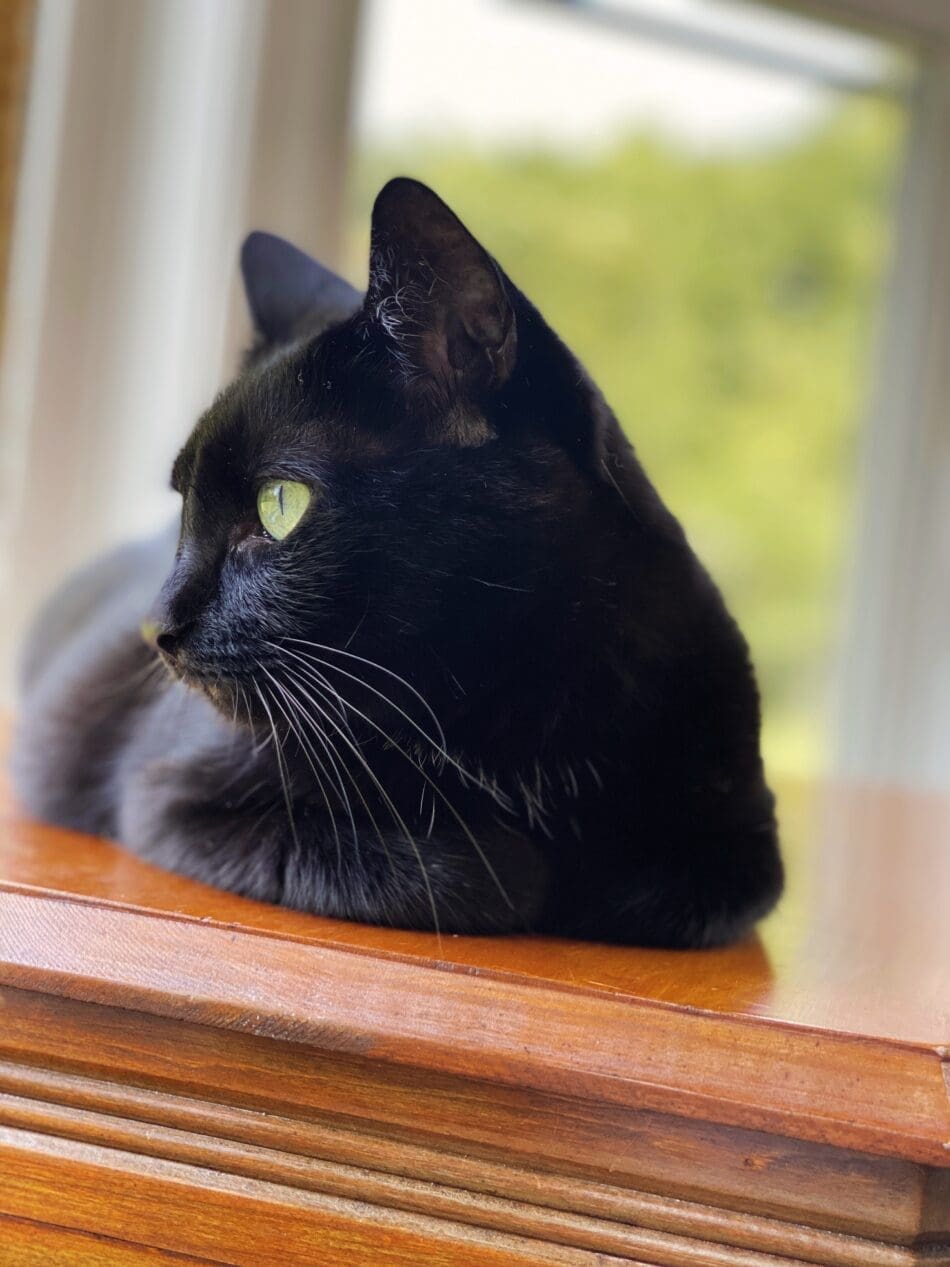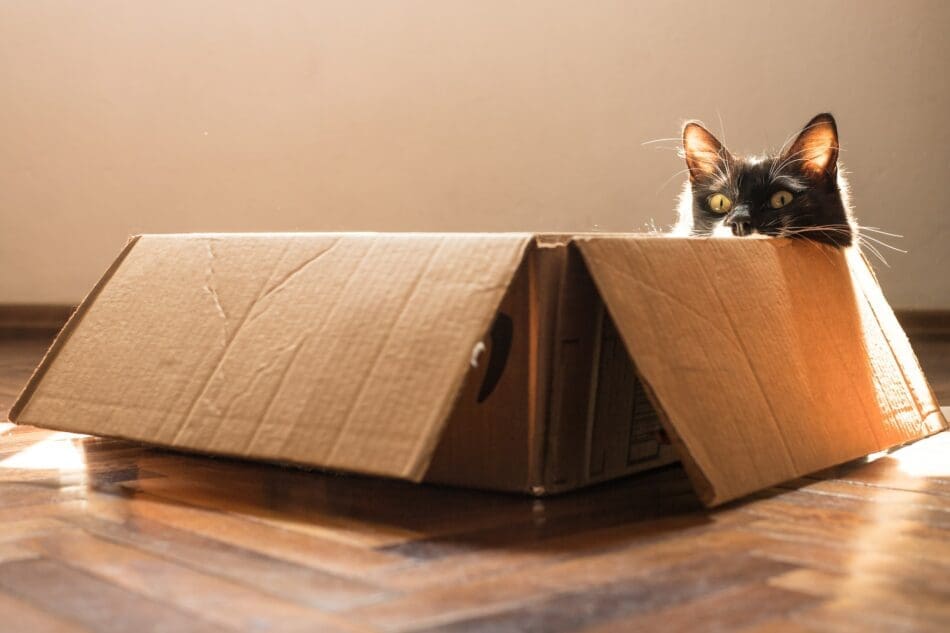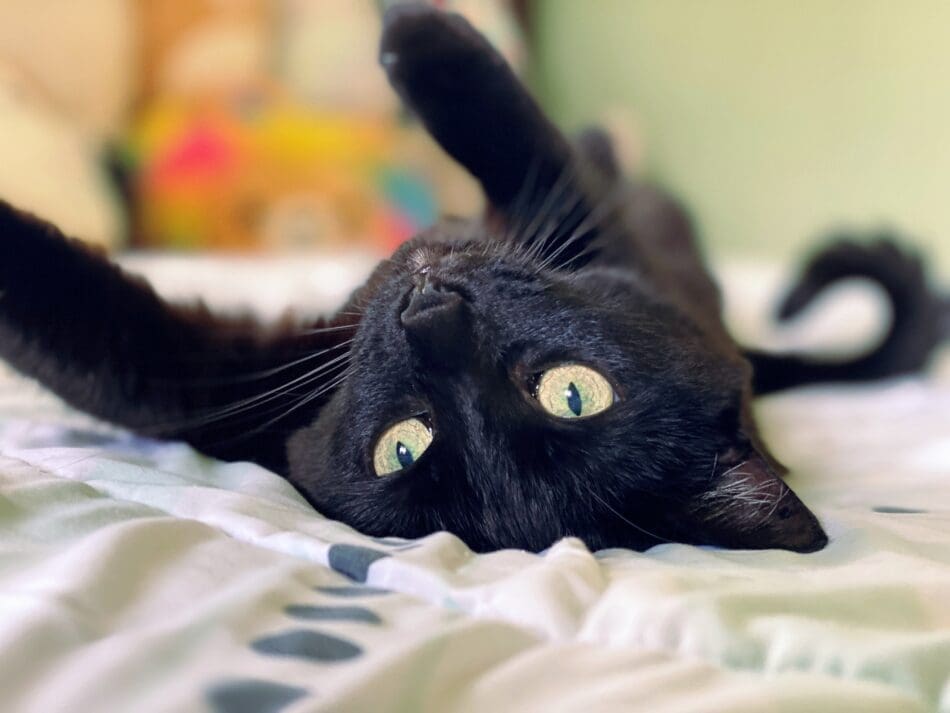
You undoubtedly want a long, healthy, and happy life for your beloved cat. Building a deep bond and enjoying years spent together is a shared desire. It begins with an understanding of the essential needs of cats and the reasons behind those needs. The journey to nurturing a wonderful relationship with your cat starts by meeting those needs and surrounding your cat with love and security. Watching your cat not just survive but thrive is the best reward. While we could probably make an exhaustive list of the things that contribute to ultimate feline happiness, as each cat would have their own unique list of preferences, this list of 15 things can serve as your initial guide.
1. Nutritious Food
Cats are often referred to as picky or finicky, but they’re actually very smart about what they eat, how they eat, and where they eat it. Cats aren’t scavengers so they prefer food that they know will be safe. They’re also creatures of habit, and that’s a skill they’ve come to rely on to ensure they don’t eat something that could be spoiled. Cats may turn a nose up at new food because they aren’t sure of the unfamiliar smell or taste. Cats also use their nose to tell them if the food is safe and fresh before they take the first bite. If you’ve served food directly from the fridge, the lack of aroma and cold temperature tells a cat this meal may not be fresh.
Ensure your cats are eating a healthy diet that’s appropriate for their age, health condition, and activity level. Serve food at room temperature or slightly warmer. If serving moist food, don’t leave it out for more than a half hour because it will be very unappealing as it turns rock hard.
2. Fresh Water
Cats who eat moist food or who hunt for their food drink less water than cats fed a diet of dry food because they get moisture from that food, but having fresh water available is essential to cat health. Have fresh, clean water, and wash the bowl daily to prevent the build-up of biofilm. Don’t use a double feeding dish with food on one side and water on the other because many cats don’t like their water source near the food. It all comes down to safety for the cat. Cats often look for water sources that are a distance away from where they eat. Provide water bowls in various areas of your home. You can place a water bowl where you feed but just don’t locate it right next to the food bowl – separate it a bit.
3. Sleeping
To the casual observer, it may seem as if sleeping is all cats ever seem to do, but their sleep pattern is efficient and practical. Cats are ambush hunters so once they’ve stalked and found potential prey, they expend a burst of energy in a short amount of time to capture their prize. Hunting is also very stressful. The frequent napping that cats do helps their bodies recharge and be ready for any immediate opportunity to hunt again. In an outdoor setting, a cat would engage in about a dozen hunting attempts a day. That doesn’t mean the cat will be successful each time, but it does require a good amount of energy to maintain that routine. Ensure the cats in your home have comfortable places for sleeping. Some cats prefer elevated places, and some like to be hidden. Provide choice.
4. Playing
As hunters, it’s in their nature to seek and discover, to be attracted to movement, scent, or sound, because they never know when something will be result in an opportunity to capture prey. Playtime is the chance to flex those muscles, practice their techniques, and work off energy. Playtime is beneficial to mental, emotional, and physical health. As kittens, social play helps them develop skills to interact, it teaches them how hard to bite so as not to injure, and it’s a great way to learn about their developing abilities. Later, solo playtime becomes important to practice hunting, learn balance, precision, have fun, and work off some of that endless kitten energy.
Interactive play is important because it can help you establish and strengthen the bond you share with a cat. It’s a great trust-building tool that’s also a lot of fun for both the cat and for you. Using a fishing pole type toy or wand toy, you can move it to mimic the movements of prey. These movements trigger your cat’s interest and then the game is on. Engage cats in twice daily interactive play sessions.
Solo playtime is important as well. Provide toys that are safe to be left out for your cat to enjoy. Don’t just leave them piled up in a toy basket though, instead, strategically place each one in interesting locations for your cat to discover.
5. Warmth
A cat’s normal body temperature is 102° F, compared to our body temperature of 98.6° F. Cats typically seek out cozy, warm locations for naps. They’ll also adjust their body position to maximize heat retention.
If there’s a ray of sun coming through your window, no doubt the cats in your home will locate it and take advantage of its warmth. Indoor cats quickly learn to shift to different window locations in the home as the day progresses and the sunlight streams change.
Older cats especially enjoy and often benefit from warmer locations for sleeping. Low-wattage heated beds are very popular for cats, especially the senior ones with stiff joints and internal thermostats that don’t function as well as they did in their youth. For cats who have mobility issues, the safest beds to use are the non-electric, self-warming ones that absorb the cat’s body heat and reflect it back. Provide cats with multiple options for cozy, warm places to curl up for a nap. If you provide an electric heated bed, make sure your cat is mobile enough to move away from it.
6. Scratching
Scratching on rough and appealing objects is a natural and beneficial aspect of healthy cat life. Scratching serves multiple functions. It keeps the nails healthy by removing the outer dead nail sheath to expose the new growth. It also helps remove debris from the nails. Scratching is both an olfactory and visual way of marking. There are scent glands in the paw pads so when cats reach up to scratch and press their paws against the object, in addition to the visible scratch marks, they leave pheromones (scent chemicals) there as well. Scratching is also a displacement behavior and cats use it to relieve anxiety, frustration, anticipation, or excitement, among other emotions. It’s also beneficial for stretching the back and shoulder muscles. Cats love to scratch and they need appropriate, appealing surfaces to display this beneficial behavior. Provide tall, sturdy scratching posts covered in a rough material such as sisal. Cats also enjoy horizontal scratching so adding a few corrugated cardboard horizontal scratch pads are recommended.
7. Climbing and Elevation
I’ve often said that we live in a horizontal world, but cats live in a vertical one. Cats love to climb for many reasons. First, being able to get to an elevated location provides safety because it increases the ability to watch for danger, escape from predators, and makes it more difficult to get ambushed from behind. Climbing is good for maintaining muscle strength. Climbing is also lots of fun, as any child will tell you.
Vertical territory is also a way to help keep peace in a multicat environment because cats can share a limited amount of space while still maintaining status through the different levels. Two cats who normally wouldn’t still together on a windowsill, may be able to enjoy the view from the window by sitting on different perches of the same cat tree.
Provide opportunities for climbing and vertical territory by having sturdy cat trees, cat shelves, or cat stairways. For older cats with mobility issues, provide ramps or stairs so they can still access elevated territory.
8. Hiding
The ability to have safe places to hide is a valuable stress coping mechanism for cats. When unsure of a situation or in an uncertain/unfamiliar environment, the ability to hide can greatly lower anxiety and provide the opportunity to assess the immediate conditions. Provide cats with multiple options for hiding in the rooms where they spend time. In a multicat household, ensure there are enough hiding places for each cat. Hiding places can be in the form of covered beds, high-sided beds, boxes on their sides, cat tunnels, or any other creative opportunity you provide. Hiding is important and shouldn’t be viewed as something you need to stop cats from doing. Never pull a cat out of a hiding place.
Hiding is also an important part of hunting and playtime. The cat, as an ambush predator, relies on stealth to stalk prey. Something as simple as being able to hide in a box on its side, or behind a piece of furniture during interactive playtime can elevate the fun and mimic natural hunting.
9. Having Choice
This is a critical factor in stress reduction. Nobody likes being forced to do something without any choice or control. Whether you’re training a cat, trying to establish a bond, or just attempting to pet or hold one, always offer choice and pay attention to whether the cat is consenting. The best way to build trust is to make sure the cat knows she always has the option of whether to engage or not.

Photo: Pam Johnson-Bennett
10. Predictability
Cats thrive on consistency and predictability. This applies to various aspects of their lives, including mealtimes, litter box, interactions with human family members and other companion animals, playtime, napping, and their overall environment. When making changes in a cat’s world, do so gradually and in a positive manner to minimize stress. This applies not only to significant changes like moving to new house or adding a new family member or pet, but also extends to seemingly minor alterations, such as switching to a different brand of litter or disrupting the regular mealtime schedule.
11. Personal Space
Cats are social animals (I know that surprises many people), but their social structure is built around resource availability. Disputes happen when a cat is worried for the security of resources. Provide enough personal space for each cat, including access to resources in their own core areas so one cat doesn’t have to cross into another cat’s area, especially if they have a tense relationship. Sharing isn’t always a good thing in the world of cats.
12. Discovery and Enrichment
Keep your indoor environment interesting. Cats love to seek and discover. In addition to regular interactive play sessions, set up opportunities for your cat to explore and get rewarded for her effort. I mentioned strategically placing solo toys in interesting locations, but you can take it farther by providing puzzle feeders and puzzle toys to keep your cat mentally and physically active. You can find lots of cat puzzle feeders online and they come in many different skill levels. You can make simple homemade ones as well. Even something as basic as placing a bit of cat food in each compartment of a muffin tin or ice cube tray can up the fun factor a bit. Look online and you’ll find basic puzzle feeders as well as elaborate ones for cats who need more of a challenge.

Photo: Luku Muffin on Unsplash
Look around at the environment to see what needs tweaking to create more enrichment. Maybe you need to get a taller cat tree? A couple scratching posts? Offer some catnip once or twice a week? Increase the interactive playtime schedule? Maybe you haven’t been spending enough time with your cat? And, if you have a multicat household where there’s tension, are you long overdue in addressing that problem?
13. Good Health
Ok, I realize that going to the veterinarian isn’t high on a cat’s list of fun activities, but a cat who isn’t feeling well or is in pain, isn’t a happy cat. Keep up on regular veterinary visits and pay attention to changes in your cat’s appetite, water intake, litter box habits, appearance, or behavior because any one of those could indicate a potential medical problem.
Address weight issues or other health concerns, no matter how seemingly minor they may appear. Regularly groom your cat to maintain coat health and check for parasites. Keep your cats nails trimmed and do a quick health check-over when grooming.
14. Having Claws
This isn’t just about cats loving the use of their claws, they need their claws. Claws are critical to walking properly, speed, protection and defense, being able to fully stretch when reaching up to scratch, hunting, climbing, and most importantly, being pain free. Declawing is the equivalent of ten individual amputations. Declaw surgery changes the way a cat walks which can create pain. Many cats also endure residual pain long after healing from the surgery. Some litter box issues have been attributed to being declawed. Fortunately, this surgery is becoming banned in more locations.
15. Being with You
Cats have long been inaccurately described as solitary, but they are social animals. Your cat may thoroughly enjoy curling up in your lap, receiving affectionate pets and cuddles. Alternatively, your cat might prefer maintaining a bit more distance while still wanting to stay close. Cats demonstrate their affection for their human family members in various ways. Some of these signs may include purring, sitting nearby, giving you gentle licks, draping a paw or tail over you, offering slow eye blinks (lovingly referred to as cat kisses), displaying relaxed and vulnerable postures, head bunting, greeting you with an upright tail, and even the friendly gesture of backend presentation, among numerous other behaviors.

Photo: Pam Johnson-Bennett
Need More Information?
For more information on cat behavior and training, refer to the books by best-selling author Pam Johnson-Bennett. Pam’s books are available at bookstores and online. We’ve included links to Amazon here on our website.
 Problem Solving & Advice by Pam Johnson-Bennett Cat Behavior Expert & Best-selling Author
Problem Solving & Advice by Pam Johnson-Bennett Cat Behavior Expert & Best-selling Author


